Does piano music help you focus? Many people reach for soft piano tracks when studying, writing, or working. Research shows the answer is: sometimes. Piano (instrumental) music can help by improving mood and reducing stress, but its effect on attention and memory varies with the task, the listener, and the type of piano track used.
Quick stats at a glance
|
Metric |
Practical recommendation |
|
Best type of music |
Instrumental piano / ambient piano |
|
Lyrics |
Usually distracting for language tasks (reading, writing). |
|
Volume |
Low to moderate; avoid loud (> 70 dB SPL) |
|
Tempo |
60–90 BPM for calm focus; up to 110 BPM for energetic tasks |
|
Format |
Stereo, low-compression streaming or local lossless |
What the science says (short)

Studies on background music and cognition produce mixed results.
Music with lyrics tends to impair verbal and reading tasks (effect sizes around moderate negative impacts in several experiments), while instrumental music shows inconsistent effects sometimes neutral, sometimes helpful for low-demand sustained-attention tasks.
Systematic reviews warn that outcomes depend on task type, music features, and individual differences. Preferred instrumental music can improve task-focused states in easy attention tasks, and long-term piano training is linked to improved executive control.
Use these findings as guidance for personal testing rather than universal rules. This area needs more rigorous, task-specific research and individual experimentation. Try simple tests.
Why piano music might help you focus?
-
Mood and arousal: Piano music often soothes or uplifts, triggering mild arousal and dopamine release that can increase motivation and sustained attention.
-
Predictable structure: Repetitive patterns in minimalist or ambient piano create a steady background that reduces attention-capturing surprises.
-
Low linguistic load: Instrumental piano has no lyrics to compete with inner verbal rehearsal, so it usually interferes less with language-based tasks.
-
Familiarity: Listening to familiar but not emotionally overpowering piano pieces can reduce cognitive load and support task flow.
When piano music can hurt focus
-
Tasks that require heavy working memory (deep reading, complex problem solving, language tasks) may suffer when music is playing. Systematic reviews find a tendency for background music to negatively affect memory and language tasks.
-
Sudden melodic or dynamic changes in a piano piece can capture attention.
-
Piano tracks that include vocals or spoken elements will typically reduce performance on verbal tasks.
Step-by-step guide: Use piano music to improve focus
-
Define your task type. If it’s language-heavy (essay writing, reading), start in silence and try short music sessions. For repetitive or low-demand tasks (data entry, routine coding, certain creative drafting), music is more likely to help.
-
Pick the piano style:
-
Deep reading: minimalist or ambient piano (sparse textures).
-
Coding/repetitive work: steady lo-fi piano or soft classical with clear rhythmic motion.
-
Creative brainstorming: slightly more rhythmic or melodic piano but low volume.
-
Set volume correctly: play music at a background level audible but not intrusive. Aim for a level that keeps speech and keyboard sounds noticeable but subordinate to your work.
-
Use instrumental-only playlists: avoid songs with lyrics or strong hooks. Prefer long continuous playlists or mixes to prevent algorithmic surprises.
-
Time your sessions: use Pomodoro-style blocks (25–50 minutes) with short breaks. Music can serve as a cue to begin and end focused intervals.
-
Test and measure: run A/B trials (one session with music, one silence) and record objective output and perceived focus. Repeat across several days to account for variability.
-
Adjust for familiarity: if a piece triggers memories or emotions, swap it for a more neutral track.
-
Alternate: mix silent and music sessions to prevent dependency and to find which tasks truly benefit.
Practical playlists & settings (table)
|
Goal |
Example piano style |
Example artist/playlist |
|
Deep focus |
Minimalist piano, sparse arpeggios |
Ludovico Einaudi, Nils Frahm (soft tracks) |
|
Calm study |
Classical piano (slow movements) |
Mozart slow sonatas; classical study mixes |
|
Productive coding |
Lo-fi piano with steady beat |
Lo-fi piano study playlists |
|
Ambient background |
Soft ambient piano loops |
Long “study piano” mixes on streaming services |
Simple experiment you can run (3-step)
-
Pick a representative 25–40 minute task.
-
Do one timed session in silence and one with a chosen piano playlist.
-
Record objective output (words, problems solved) and subjective focus (1–10). Compare results over multiple trials — individual differences are large, so personal testing matters.
Stats table: research snapshots
Deep dive: possible mechanisms (simple)
-
Arousal–mood: piano music can slightly raise mood and alertness, which helps sustained attention for low-demand tasks.
-
Masking & load: soft piano masks distracting ambient noise and can lower interruptions, reducing cognitive load.
-
Practice effect: learning piano strengthens attention and inhibitory control over months, improving executive function.
How to build a focus-friendly piano playlist (step-by-step)

-
Collect 30–60 minutes of instrumental piano pieces with steady tempos.
-
Exclude tracks with lyrics or sudden loud sections.
-
Order tracks: calm intro, steady middle, gentle outro.
-
Use continuous playback (offline folder or long playlist) to avoid abrupt changes.
-
Rate tracks after sessions and remove attention-grabbers.
Measurement template (compact)
|
Metric |
How to measure |
Goal |
|
Output |
Words/problems solved |
Increase vs baseline |
|
Focus score |
Self-rate 1–10 |
≥7 |
|
Distractions |
Phone/tab checks |
≤5 per session |
Quick example (hypothetical): In repeated 25-minute trials, Person A wrote 520 words in silence vs. 580 words with a neutral piano playlist and reported higher focus. This demonstrates the large individual differences researchers report.
Common myths (short)
-
“The Mozart effect will permanently raise IQ.” Not true — short boosts in specific spatial tasks were reported but not lasting or generalizable.
-
“Any music helps memory.” Not true lyrics often impair memory and language tasks.
Practical tips (quick)
-
Prefer instrumental piano without sudden changes.
-
Keep volume moderate and consistent.
-
Use music as a tool, not a crutch alternate between silence and music sessions.
-
For deeply analytical work, opt for silence or low, non-musical ambient noise.
Frequently Asked Questions:
Q: Does piano music help you focus on studying?
A: It can especially for repetitive or low-demand tasks and for improving mood and motivation but it can hinder tasks needing heavy verbal working memory. Personal testing is essential.
Q: Is classical piano better than lo-fi piano?
A: Both can work. Classical piano is structured and calming; lo-fi piano adds rhythmic steadiness that helps repetitive tasks. Choose by preference and task type.
Q: How loud should piano music be while studying?
A: Keep it low to moderate (background level). Excessively loud music reduces performance and increases distraction.
Q: Can learning piano improve focus long-term?
A: Yes. Musical training, including piano practice, is associated with improved executive functions, attention, and cognitive control over time.
Q: What if I get distracted by familiar melodies?
A: Replace with less familiar or more ambient piano. Use long mixes with gentle variation to avoid attention capture.
Q: Headphones or speakers?
A: Headphones block outside noise; speakers are more natural. Pick what reduces distraction.
Q: Is piano music better than white noise?
A: It depends. White noise removes distracting variance; piano adds structure and mood. Try both and track results.
Final takeaway
Does piano music help you focus? The short answer: sometimes. Instrumental piano often supports mood and sustained attention for many low-demand tasks, but it can harm reading and language heavy work.
Use short A/B tests, match the style and volume to the task, and prefer instrumental, steady tracks for best chances of success. Now.




